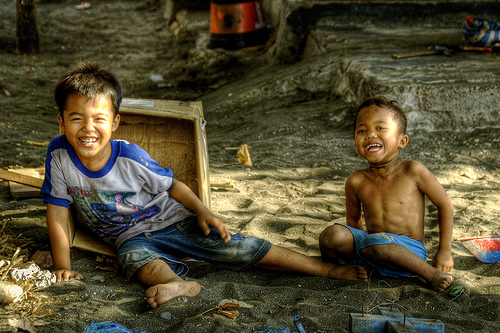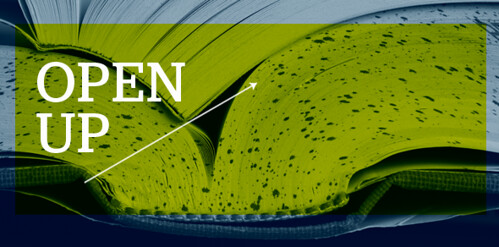Share of the Week!
 A Kalash tribe woman from Pakistan sports a traditional headdress
A Kalash tribe woman from Pakistan sports a traditional headdress
Share of the Week is open content stuff so great and awesome that we can’t keep it to ourselves.
Creative Commons Love: Manal Khan on Flickr.com
 A Kalash tribe woman from Pakistan sports a traditional headdress
A Kalash tribe woman from Pakistan sports a traditional headdress
Share of the Week is open content stuff so great and awesome that we can’t keep it to ourselves.
Creative Commons Love: Manal Khan on Flickr.com
Share of the Week is open content stuff so great and awesome that we can’t keep it to ourselves.
Creative Commons Love: Aftab Uzzaman on Flickr.com
Share of the Week is open content stuff so great and awesome that we can’t keep it to ourselves.
Creative Commons Love: keso s on Flickr.com
This photo depicts Vishukkani, the most important event in Vishu, which is a Hindu festival. To learn more, please click here.
Share of the Week is open content stuff so great and awesome that we can’t keep it to ourselves.
Creative Commons Love: Ronn aka “Blue” Aldaman on Flickr.com
Street children in Indonesia normally have no access to a proper education, as their families aren’t able to afford it. That’s why a group called Save Street Child Surabaya has banded together to provide free education to children in the second largest city, Surabaya.
Community volunteers teach children in public locations, such as parks and mosques. Recruited as high school and college students, they are referred to as “Cool Teachers” in recognition of their desire to share knowledge. Rizky Arif, a 20-year old student at Shipbuilding State Polytechnic, describes what motivates him, “They have to work for their parents until 3:00 AM when they should learn more and play. Poverty forces them to work hard without any education. This reality encouraged me to become a cool teacher volunteer.”
 Street children’s typical day involves long and harsh working terms: polishing shoes, street performing, scavenging, and begging. As such, lessons held during the evening hours give the children something to look forward to. “I like mathematics the most. It helps me sell the lumpia (spring rolls). My parents do not prohibit me to study as long as I do it after working,” says ten-year-old Muhammad Ilham Fauzi.
Street children’s typical day involves long and harsh working terms: polishing shoes, street performing, scavenging, and begging. As such, lessons held during the evening hours give the children something to look forward to. “I like mathematics the most. It helps me sell the lumpia (spring rolls). My parents do not prohibit me to study as long as I do it after working,” says ten-year-old Muhammad Ilham Fauzi.
Presently, around 20 to 30 people have made a positive impact on these young lives. The most important lesson children are learning is that they deserve the right to be curious, discover new things, and build their dreams.
Arist Merdeka Sirait, chairman of the National Commission for Child Protection, commented on the importance of community effort. “I appreciate what they do to support the education of street children. It should be our responsibility to give street children help.”
He continued, “All people and government must be more serious to solve the problem of education for street children. They are the future generation of this nation. Don’t ignore their education.”
Creative Commons Love: Ville Miettinen on Flickr
Share of the Week is open content stuff so great and awesome that we can’t keep it to ourselves.
Creative Commons Love: Ronn aka “Blue” Aldaman on Flickr.com
Share of the Week is open content stuff so great and awesome that we can’t keep it to ourselves.
Creative Commons Love: Martin Sojka on Flickr.com
Share of the Week is open content stuff so great and awesome that we can’t keep it to ourselves.
Creative Commons Love: Franck Vervial on Flickr.com
Share of the Week is open content stuff so great and awesome that we can’t keep it to ourselves.
Creative Commons Love: aspheric.lens on Flickr.com
 The Sponsoring Consortium for Open Access Publishing in Particle Physics (SCOAP3) announced last week that 90% of particle physics articles will soon be available for free. Publication costs will be covered by a collection of libraries, library consortia, research institutions, and funding agencies, making this a big move towards throwing off the yoke of academic publishing costs.
The Sponsoring Consortium for Open Access Publishing in Particle Physics (SCOAP3) announced last week that 90% of particle physics articles will soon be available for free. Publication costs will be covered by a collection of libraries, library consortia, research institutions, and funding agencies, making this a big move towards throwing off the yoke of academic publishing costs.
For some time now, the academic world has been quietly frustrated by the costs that surround publishing scientific findings. Earlier this year, Harvard sent a letter to publishers stating, “Many large journal publishers have made the scholarly communication environment fiscally unsustainable and academically restrictive.” A full 10% of Harvard Library’s acquisition budget goes entirely to journals; “Prices for online content from two providers have increased by about 145% over the past six years, which far exceeds not only the consumer price index, but also the higher education and the library price indices.”
An annual subscription to the chemistry journal Tetrahedron will cost your University $20,269 and Journal of Mathematical Sciences rings up at $20,100. Those are for one institution to access one journal for one year. The authors don’t get paid for the articles. The “peers” who make the magic of peer review don’t get paid. Printing costs surely make up some of the cost, but those haven’t gone up by 145% in the last 6 years and could probably be cast aside in the wake of the pdf. So then, where does all this money go?
Well, it turns out those subscription costs serve the invaluable service of making publishers rich. In 2011, the world’s largest publisher of academic journals, Elsevier, made a profit of $1.2 billion off of only $3.38 billion in revenues, a profit margin of over 35 percent. Compare that with Apple’s 2011 profit margins which hovered around 25 percent.

The most compelling argument against open content is that artists (or researchers, in this case) need revenue from their creations to support them to create more. This argument is utterly hollow in respect to academic publications where researchers write for free — even more so now that we can largely replace the role of publishing companies with a bit of teamwork and HTML.
What makes matters worse is that restricting articles actually hurts the researchers who write them. Academics don’t measure their value by counting the zeroes in their bank account but by the citations on their CVs. High cost of access means fewer readers. Fewer readers means fewer citations. Fewer citations means smaller CVs, not to mention a blockage of knowledge and progress.
SCOAP3 has made a big move for the academic world. While there are currently options available for academics to publish their articles openly, such as the PLOS ONE, the publication expense usually falls on the shoulders of the researcher. Costs can be high, anywhere from $1350 to $2900 depending on the subject, which seems to change the problem rather than fix it. The current deal has the money coming from the same places — institutions that would likely be buying access to the articles anyway – -but provides it upfront, allowing the articles to be shared openly, for free.
We like that.
Creative Commons Love: Opensourceway and Image Editor at Flickr.com